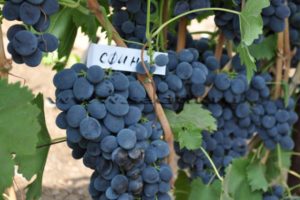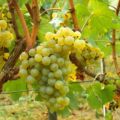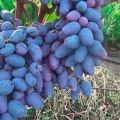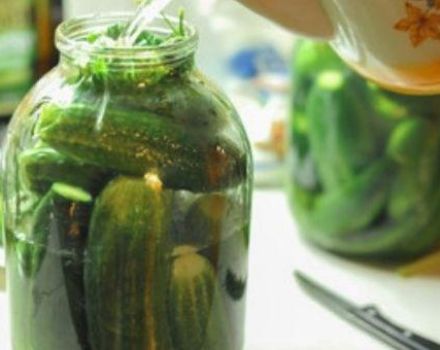Description and characteristics of Harold fruit grapes and history of creation
People use juicy, ripe bunches of grapes to decorate the table. Thanks to the work of breeders, gardeners can grow the plant in the northern regions of the country, where the length of the summer season is short. Harold grapes are considered one of the best hybrid plants. Let's consider a detailed description.
The history of the creation of the variety
Experts got it thanks to crossing the hybrid varieties Arcadia and Vostorg with the Muscat summer variety. Brought out in the city of Novocherkassk. It is most popular in warm regions with a mild climate, since it is not required to cover the seedling.Of course, Siberia and the Urals are suitable for Harold, but the frost resistance of the plant is not fully understood. It is not known how the seedling will behave after a frosty winter.
Description
The main positive feature of Harold grapes is the rapid ripening of the berries. Fruits fully ripen in 95-100 days from the moment the first buds appear. Harvesting is carried out from late July to early August. We suggest considering a more detailed description of the variety:
- It takes root well after disembarkation, unpretentious in care.
- Quite fruity. Because of this, there is a risk of developing a large number of buds, which must be removed so as not to overload the shrub with fruits. It is for this reason that it is required to regularly and timely trim the eyes.
- Refers to high-yielding varieties. From one shrub, you can collect about 15 kilograms of delicious, juicy grapes.
- The flowers are bisexual, therefore, there is no difficulty in pollination. May be used as an additional pollinator for plants with only female flowers.
- The bunches can be in the form of a cone or a cylinder. Weight - from 0.5 to 0.7 kilograms. The berries are densely packed in them. Without loss of taste and quality, bunches can be on the bushes for up to 60 days.
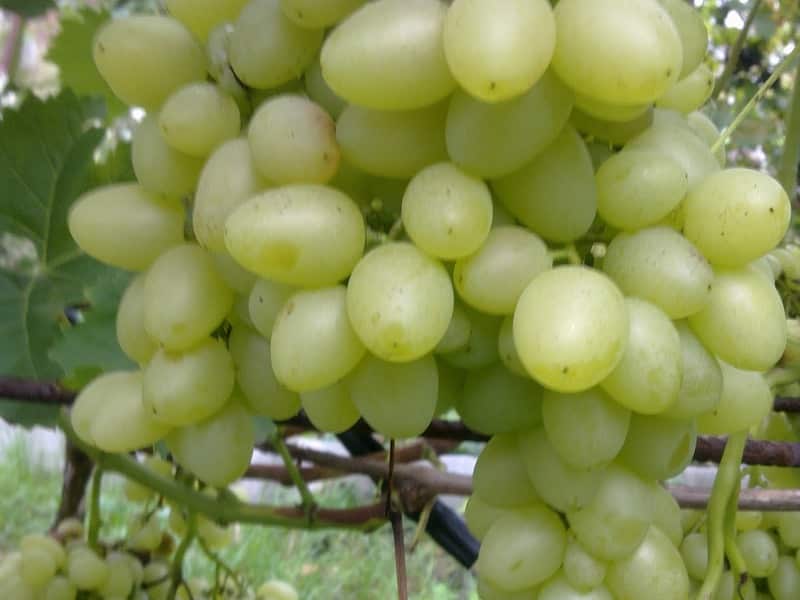
I would like to draw special attention to the description of berries:
- oval shape, with a pointed tip;
- weight - 5-7 grams;
- the shade is yellow; upon reaching maturity, the color becomes amber;
- there are up to 3 seeds in each berry;
- the skin is dense, allowing to protect the fruit from insects;
- taste - sweet and sour, with notes of nutmeg.
The crop is well transported, retaining the taste and appearance. The berries do not crack, which has a positive effect on the final product and increases berry sales.
Harold grapes are considered one of the frost-resistant grapes, withstands frosts down to -25 degrees.
This phenomenon allows the plant to be used in the northern regions.At low air temperatures, it is recommended to cover the bushes for the winter so as not to cause significant damage to the fruiting buds. Grapes tolerate not only frosts, but also drought and increased moisture. Fruit cracking is not observed.
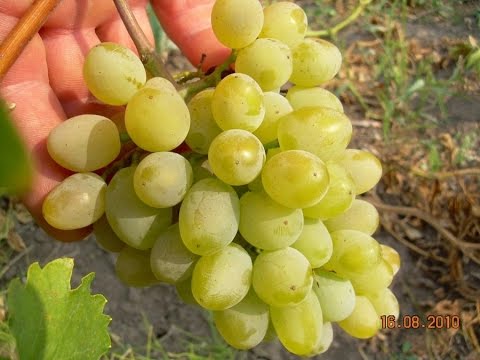
Advantages and disadvantages of the variety
Experts highlight the negative and positive aspects of this grape variety. Let's start with the pros:
- Rapid maturation.
- Getting a stable harvest.
- Resistant to frost.
- Well transported.
- Excellent appearance, preservation of unusual taste.
- Used to prepare wine drinks.
The disadvantages include:
- the presence of bones;
- additional spray is required to protect against fungal microorganisms, insects.
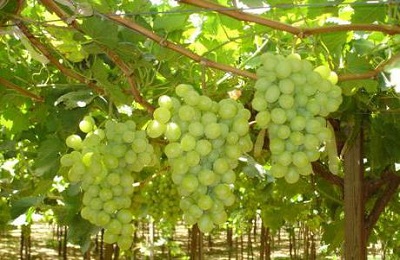
Landing features
In order to properly plant a shrub, you need to know several important rules:
- The two permitted periods for disembarkation are spring or autumn. The latter option is less preferable, since at this time of the year the air temperature drops significantly, which adversely affects the survival of a young seedling.
- The air temperature for planting an immature plant should be constant, above 15 degrees.
- The landing site is prepared in the fall. It is required to dig a hole, on the bottom of which to lay out drainage, fertilizers, and then - the soil.
- The size of the pit is 80 by 80 centimeters, and the distance between them is at least 2.5 meters. In this case, the plant develops freely, grows and bears fruit.
- When the soil has settled, a wooden stake should be carefully inserted into the center of the hole. It is to him that the vine is tied, as it grows.
- Before planting, the seedling must have a formed root system. To do this, it is pre-soaked in clean water until the first roots appear.
- Dip into the prepared hole.
- Cover with soil, water.
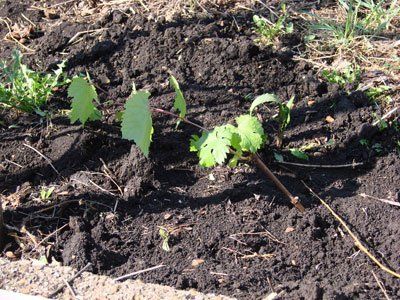
You can protect the bush from frost if you carefully cover it first. Grapes are unpretentious to the soil. It takes root well on any soil, but it is recommended to choose the sunny side.
Care
The plant will bear fruit and grow if properly cared for. Consider the basic principles of care.
Watering
It is required to apply liquid to the soil according to the standard method. The first time - after the opening of the shrubs, the second - before the appearance of the first color, and subsequent times - during the period of fruit formation. The final watering is carried out before insulating the grapes for the winter.
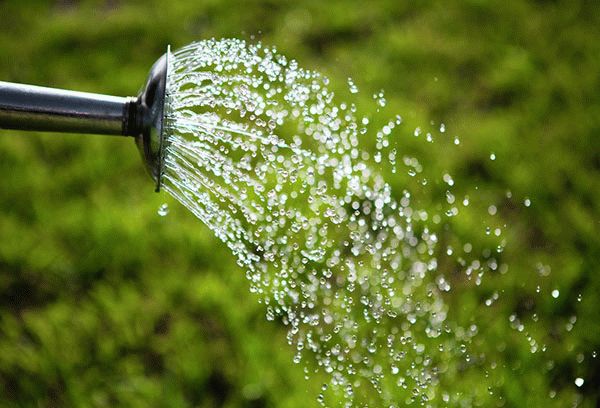
Mulching varieties
This process allows moisture to be retained in the soil for a longer time. For these purposes, it is allowed to use foliage, straw, peat or purchase a specialized agent that prevents the soil from drying out and the appearance of weed plants.
Shelter
Harold variety requires additional cover. For these purposes, take plastic wrap. Tie the bush. Then place neatly on the ground and fasten firmly. Place iron arcs over the grapes, and stretch the film over the top.
The film material is taken in one layer. Many gardeners cover the shrubs with earth.
Advice! It is possible to prevent the appearance of a putrefactive process if, before fixing the plant to the ground, lay dry material.
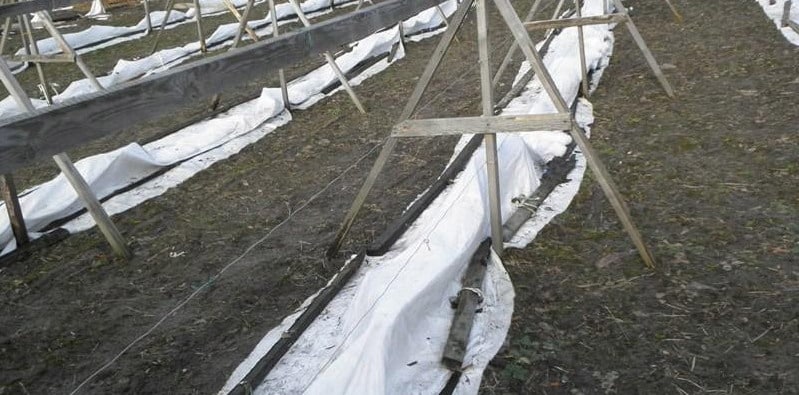
Pruning
Pruning allows for increased fruiting and proper plant formation. One shoot is cut into 6 eyes.
Fertilizer
Experts recommend fertilizing grapes in the spring. For this, mineral dressing is used. For the first time, fertilizer is introduced after 3 years from the moment of planting in the ground. Fertilizers of organic origin are used once every 2 years. Before the onset of cold weather, grapes need to be fertilized with preparations containing a significant amount of potassium.
Protection from pests and diseases
Differs in high resistance to infection by microorganisms.Despite this, with high air humidity, powdery mildew and gray rot can attack the crop. For prevention purposes, spray chemicals are used. Of the pests, the most dangerous is considered grape bunches.
Reproduction
Propagated grapes by cuttings or grafting. For the first type, the classical method is used. The Kober variety is suitable as a stock. The grafting is placed on old bushes with a thick layer of wood.

